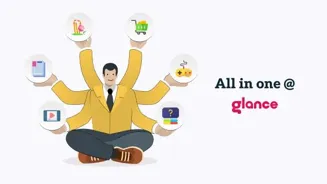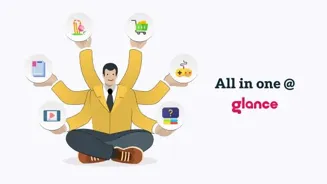Unlock the secrets to productivity with science-backed methods! Dive in for practical tips to enhance focus and get more done
In today's jampacked world, everyone is trying to squeeze more out of their
day. From juggling office work to running errands and spending time with family, feeling productive is paramount. But simply trying harder isn't always the answer.

Science offers some genuinely useful strategies to boost your productivity, backed by research and observation. These aren't just fleeting motivation; they're practical techniques you can integrate into your daily life for long-term gains.
Let's dive into the science of getting more done, the Indian way!
The Pomodoro Technique: Timeboxing Your Way to Focus
Imagine this: you're sitting down to study for exams, but your phone keeps buzzing, or the chaiwala's calls beckon. It's tough to stay focused! The Pomodoro Technique, named after the tomato-shaped timer, can help.

The basic idea is this: work in focused 25-minute intervals, followed by a short 5-minute break. After every four "pomodoros" (25-minute work sessions), take a longer 15-20 minute rest. This technique capitalises on the science of timeboxing and attention span.
Short, focused bursts of work help prevent mental fatigue, while the regular breaks allow your brain to rest and consolidate information. Studies show that structured time management, like that used in the Pomodoro Technique, can significantly increase both productivity and reduce stress.
Instead of staring at a mountain of work, you're only thinking about the next 25 minutes. This makes even the most daunting tasks feel manageable.
The effectiveness of the Pomodoro Technique lies in its simplicity and flexibility. You can easily adapt the timing to fit your own concentration span.
Some people find 30-minute work sessions with 10-minute breaks suit them better. The key is to identify a rhythm that works for you and stick to it consistently. Using a physical timer, like a kitchen timer or a smartphone app, is also recommended to enforce the structure.
This removes the temptation to "just work for a few more minutes" and ensures that you take those crucial breaks. Remember, rest is not laziness! It's an integral part of the Pomodoro Technique, allowing your brain to recover and prepare for the next focused session.
Don't underestimate the power of those small breaks. Get up, stretch, look out the window, or do a few breathing exercises. These brief moments of relaxation can do wonders for your focus and energy levels.
Prioritisation with Eisenhower Matrix: Urgent vs. Important
Picture this: you have a long to-do list, with phone calls, email replies, approvals, and a presentation to prepare but don't know where to start. The Eisenhower Matrix, also known as the Urgent-Important Matrix, comes to the rescue.
This simple tool helps you categorise tasks by urgency and importance, enabling you to prioritise effectively. The matrix is divided into four quadrants. Quadrant 1 is urgent and important: these are crises or pressing deadlines that require immediate action.
Quadrant 2 is important but not urgent: these include activities like planning, relationship building, and skill development. Quadrant 3 is urgent but not important: these are interruptions, meetings, and some emails that can be delegated.
Quadrant 4 is neither urgent nor important: these are distractions and time-wasters that should be minimised.
Using the Eisenhower Matrix, you can quickly assess what tasks deserve your immediate attention. Delegate Quadrant 3 tasks whenever possible, and eliminate Quadrant 4 activities altogether.
Focus your time and energy on Quadrant 2, which contains the activities that contribute most to your long-term goals. By prioritising proactively, you'll spend less time putting out fires in Quadrant 1 and more time building a solid foundation for future success.
The matrix provides a framework for making conscious choices about how you invest your time, ensuring that you're not just busy but actually productive. Remember, being busy doesn't always equate to being effective.
It's important to distinguish between urgent tasks, which require immediate action, and important tasks, which contribute to your long-term goals.
The Two-Minute Rule: Tackling Procrastination Head-On
Procrastination is a common enemy of productivity. Sometimes, we feel hesitant even making a start on the task. The Two-Minute Rule, popularised by David Allen in his book "Getting Things Done," is a powerful weapon against this.

The Rule states that if a task takes less than two minutes to complete, do it immediately. This could include replying to a quick email, paying a bill, or putting away a stray item. By knocking out these small tasks immediately, you prevent them from piling up and becoming overwhelming.
The feeling of accomplishment, although minimal, can also provide a momentum toward other bigger and challenging tasks.
The two-minute rule works by addressing the initial inertia that often keeps us from getting started.
If you can break a task down into smaller, more manageable steps, it becomes much easier to take that first step. For example, instead of thinking about "writing a report," you might start with "opening the report document" or "writing the heading.
" These small actions can make the task less daunting and help you build momentum. By addressing small tasks immediately, you free up mental space and prevent them from weighing on your mind. This allows you to focus more effectively on larger, more complex projects.
The two-minute rule is a simple yet effective technique for overcoming procrastination and building a sense of accomplishment.
Minimising Interruptions: Creating a Focus Zone
Constantly being interrupted is a productivity killer. Whether it's chatty colleagues, phone calls, or distracting notifications, interruptions break your concentration and make it difficult to regain your focus.
Studies show that it can take up to 25 minutes to fully recover from an interruption and return to your original task. Minimising interruptions is therefore crucial for maintaining a high level of productivity.
Establish clear boundaries with colleagues and let them know when you need uninterrupted time to focus. Consider using headphones to signal that you're not available for conversation.
Turn off unnecessary notifications on your phone and computer, and set aside specific times for checking email and social media.
Create a dedicated workspace where you can concentrate without distractions. This could be a quiet room in your home, a library, or even a coffee shop.
Personalise your workspace to create a comfortable and conducive environment for focusing. This may involve adding plants, playing background music, or using noise-cancelling headphones.
Communicate your need for uninterrupted time to your family and friends, and ask for their support in creating a focus zone. By taking proactive steps to minimise interruptions, you can significantly improve your ability to concentrate and get more done. In a busy office setting this could be hard.
But talking to your colleagues and intimating that you need some crucial time may help.
Batching Similar Tasks: Streamlining Your Workflow
Multitasking is often touted as a way to get more done, but research has shown that it actually reduces productivity. Instead, batching similar tasks together allows you to streamline your workflow and improve efficiency.
When you switch between different types of tasks, your brain has to constantly adjust, which can lead to mental fatigue and errors. By grouping similar tasks together, you minimise the need for task switching and allow your brain to focus on a single type of activity.
For example, instead of checking email throughout the day, dedicate a specific time slot to respond to all your emails at once. Similarly, you could batch your phone calls, meetings, or report-writing sessions.
Batching allows you to enter a state of "flow," where you become fully immersed in the task at hand. This can lead to increased creativity, efficiency, and overall productivity. When planning your day, identify tasks that can be grouped together and schedule them accordingly.
This will help you create a more structured and focused workflow. Be mindful of your energy levels throughout the day and schedule your most demanding tasks for when you're feeling most alert and focused. You can even have two days per week for meetings only.
By batching similar tasks, you can harness the power of focus and streamline your workflow for maximum productivity.
Regular Breaks and Mindfulness: Recharging Your Brain
Our brain is an intricate organ that requires rest and recuperation. Regular breaks and mindfulness practices are essential for maintaining optimal brain function and productivity.

Taking short breaks throughout the day allows your brain to rest and recharge, preventing mental fatigue and improving focus. During your breaks, step away from your desk, stretch, walk around, or engage in a relaxing activity.
Mindfulness practices, such as meditation and deep breathing, can help you calm your mind, reduce stress, and improve concentration.
Even a few minutes of mindfulness each day can have a significant impact on your productivity. Find a quiet space, close your eyes, and focus on your breath.
Pay attention to the sensations in your body and let go of any thoughts or distractions that arise. Mindfulness can help you become more aware of your thoughts and emotions, allowing you to respond to them with greater clarity and intention.
By incorporating regular breaks and mindfulness practices into your daily routine, you can improve your brain function, reduce stress, and boost your overall productivity. Do some stretching every two hours to keep the blood flowing to all parts of your body.
The Power of Planning: Starting the Day Right
A well-planned day is often a productive day. Taking a few minutes each morning or evening to plan your tasks and priorities can set you up for success. Create a to-do list, prioritise your tasks, and break down larger projects into smaller, more manageable steps.
Having a clear plan for the day allows you to stay focused, avoid distractions, and make the most of your time. Prioritisation of the activities will help in accomplishing more urgent tasks.
Review your plan regularly throughout the day and adjust it as needed.
Unexpected tasks and interruptions are inevitable, so it's important to be flexible and adaptable. By regularly reviewing your plan, you can ensure that you're staying on track and making progress towards your goals.
In the evening, take some time to reflect on your day and identify what worked well and what could be improved. This will help you refine your planning process and become more efficient over time. By starting each day with a solid plan, you can take control of your time and boost your productivity.
Make sure you include the timings for each task.
AI Generated Content. Glance/InMobi shall have no liability for the content









